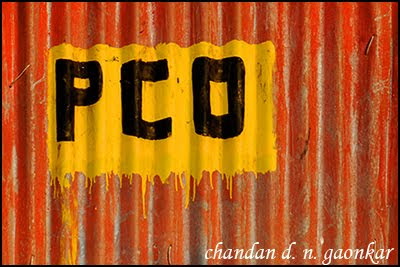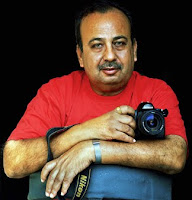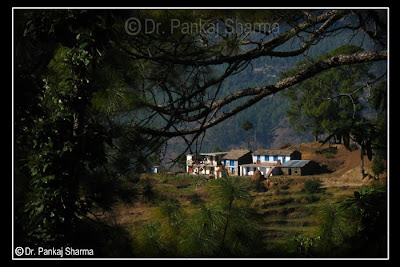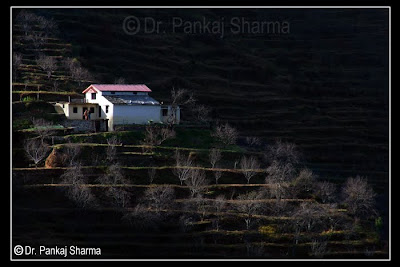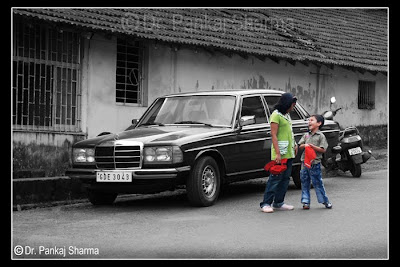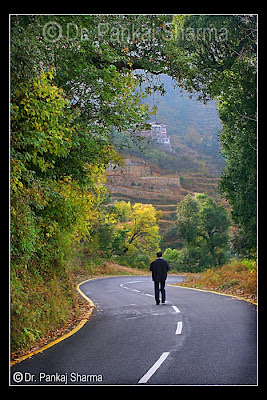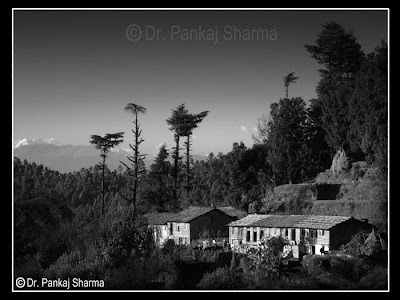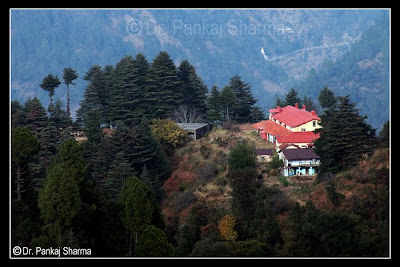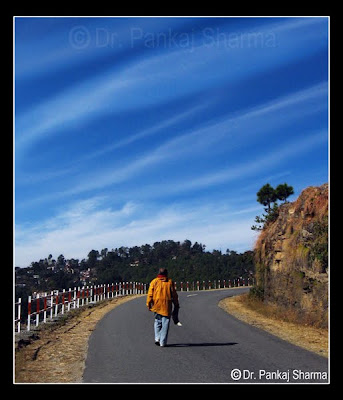......
“Alert & Watchful”
....
Friends,
......
This time I’m before you with one of my favourite photographs, “Alert & Watchful”. This was clicked at Ahichchatra; a historical site situated around 45 Kilometres from Bareilly (U.P, India). This widely expanded place has a rich historical background. The uneven land and bushes give a distinct look to this place. A good number of peacocks and Nilgais (the Indian Blue Bulls) reside here. I was on a trip to this place with some of my friends in 2004. When we were returning back from the place, a herd of Blue Bulls came into vision. As our car reached close to them, they went away from us quickly. But this young Blue Bull returned back after striding a little and started looking at us. Luckily I was sitting by the window of our car. I started clicking without wasting any moment. I took a few photographs. This is one of them. The thing which I like most in this picture is the posture of the Blue Bull. The young creature seems giving pose for a photograph with innocence.
I used a Nikon F-80 camera with a 170-500 mm Sigma lens. The film was Fuji Crystal, 400 ASA. The photograph was clicked at shutter speed priority mode (at 1/500 sec.)
This time I’m before you with one of my favourite photographs, “Alert & Watchful”. This was clicked at Ahichchatra; a historical site situated around 45 Kilometres from Bareilly (U.P, India). This widely expanded place has a rich historical background. The uneven land and bushes give a distinct look to this place. A good number of peacocks and Nilgais (the Indian Blue Bulls) reside here. I was on a trip to this place with some of my friends in 2004. When we were returning back from the place, a herd of Blue Bulls came into vision. As our car reached close to them, they went away from us quickly. But this young Blue Bull returned back after striding a little and started looking at us. Luckily I was sitting by the window of our car. I started clicking without wasting any moment. I took a few photographs. This is one of them. The thing which I like most in this picture is the posture of the Blue Bull. The young creature seems giving pose for a photograph with innocence.
I used a Nikon F-80 camera with a 170-500 mm Sigma lens. The film was Fuji Crystal, 400 ASA. The photograph was clicked at shutter speed priority mode (at 1/500 sec.)
......
--Dr. Pankaj Sharma.
--Dr. Pankaj Sharma.
......
















